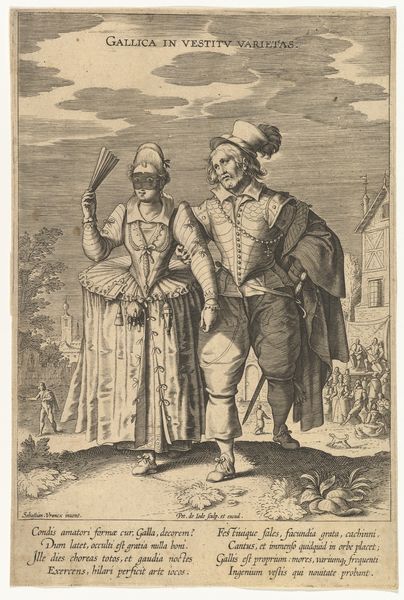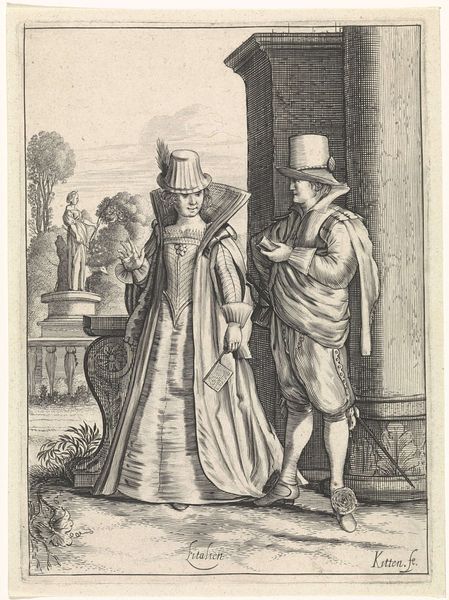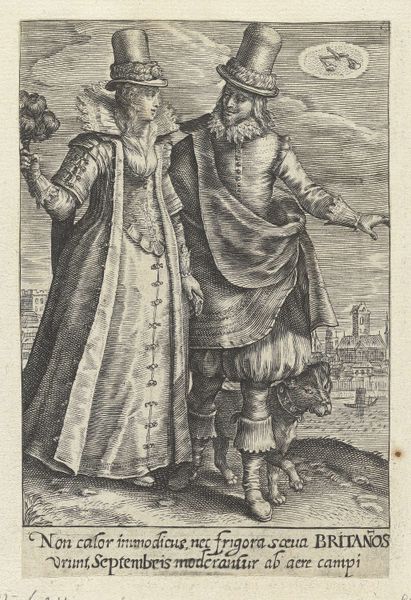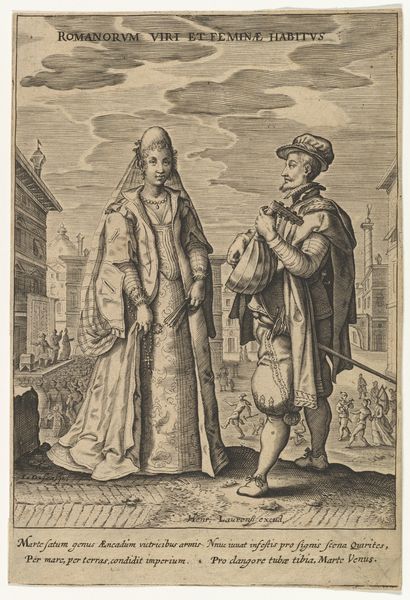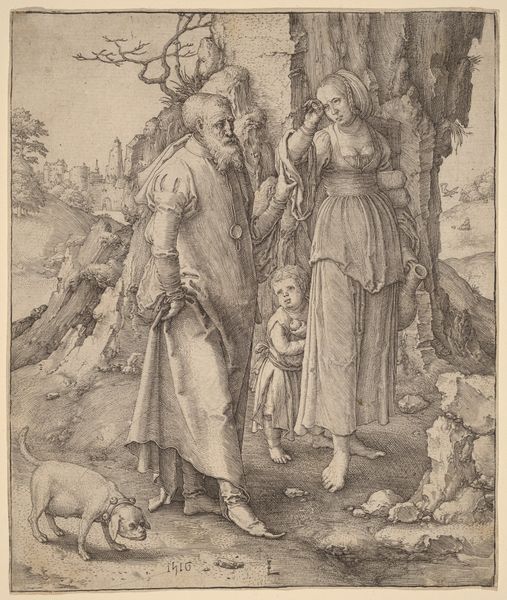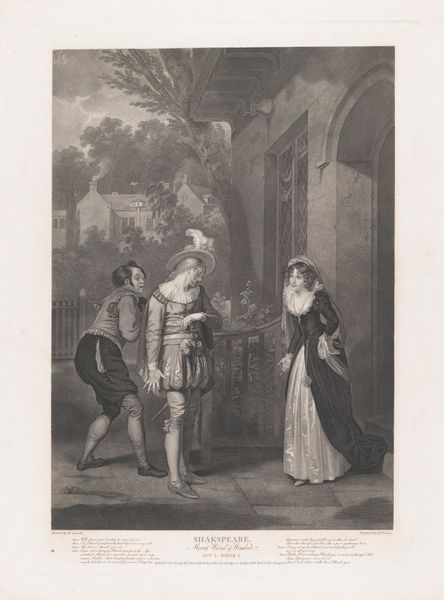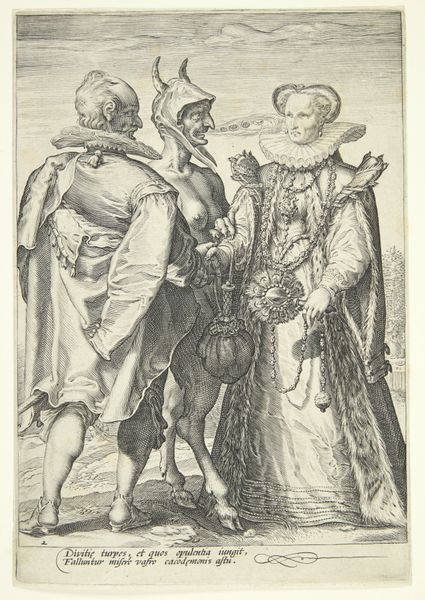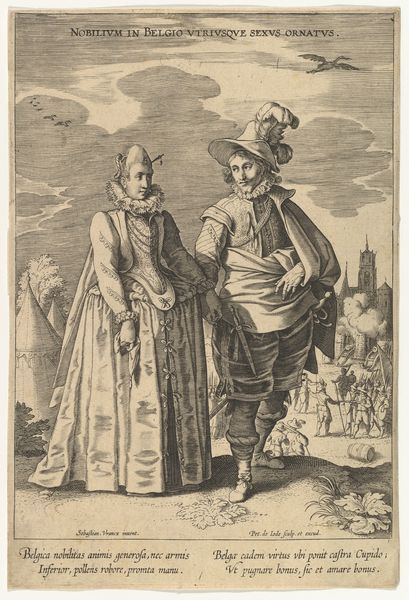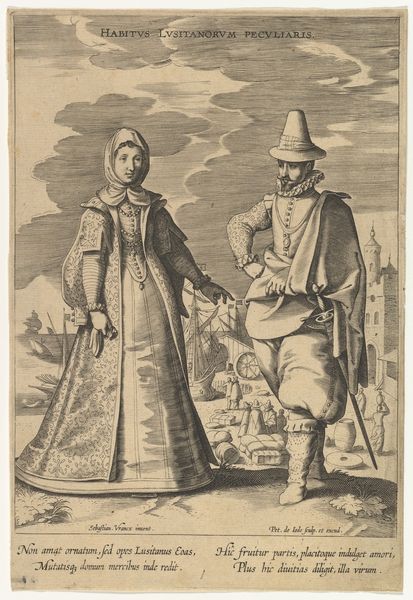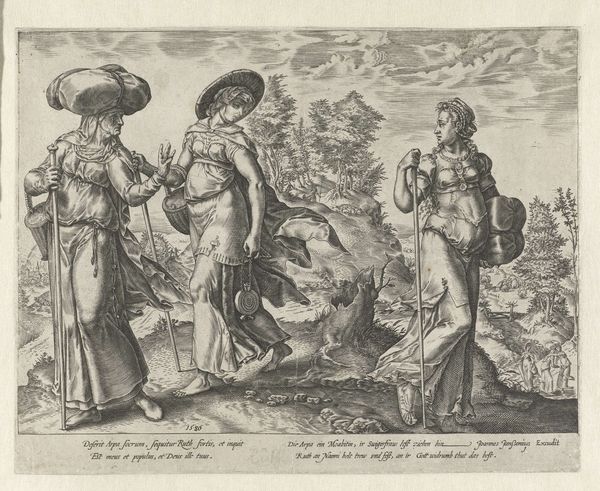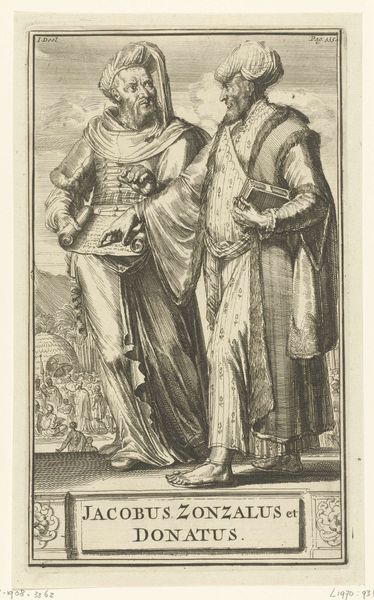
Germanicus Habitus, from Fashions of Different Nations 1580 - 1634
0:00
0:00
drawing, print, engraving
#
portrait
#
drawing
# print
#
genre-painting
#
history-painting
#
northern-renaissance
#
engraving
Dimensions: sheet: 9 11/16 x 5 7/8 in. (24.6 x 15 cm)
Copyright: Public Domain
Curator: This is an engraving entitled "Germanicus Habitus, from Fashions of Different Nations" created between 1580 and 1634, and attributed to Pieter de Jode I. It is currently part of the Metropolitan Museum of Art's collection. Editor: The figures certainly strike a pose, almost theatrical in their presentation. The lines are sharp and defined, providing incredible detail and texture, especially noticeable in the clothing folds. It does feel a little…stiff? Curator: The stiffness you observe is largely inherent to the engraving technique. Each line had to be meticulously etched, meaning that flexibility in line-weight was achieved by very particular methods of cross-hatching, influencing texture. Furthermore, the composition relies on strong contrasts between light and shadow which does amplify a sense of rigidity in form, despite the evident softness achieved in rendering fabric and flesh. Editor: You’re right; look at how that contrasts with the open landscape background. Beyond the texture, I’m intrigued by the subjects and their positioning. She’s subtly touching his hand, almost restraining him from something. Who are these figures, and what stories do these details tell about gender roles or societal expectations? Curator: The title itself is a clue, and this falls within a period highly invested in representing and sometimes constructing historical figures. The print can be understood within the era’s fascination with ancient Germanic customs, reimagining figures and solidifying particular regional and even national identities through historical associations. The garments they are wearing allude to what could be viewed as historical attire, and although idealized, these were understood as markers of identity. Editor: Interesting, so they embody this constructed vision of the “Germanicus.” The contrast of refined lady with…I don't want to say 'barbarian', but there’s an implied untamed element in his beard, hat, sword – juxtaposed with his courtly attire – really encapsulates the tension. I read the Latin captions as well. “The German serves, in iron vestments." But look, he drinks too? Interesting depiction. Curator: Precisely! Through analyzing its structure, one can detect the careful considerations and historical imaginations employed during this epoch, constructing its meaning for a particular kind of viewer, and reinforcing that understanding with very subtle cues in terms of pose, gesture, and even material accoutrements. Editor: Examining the societal functions that historical portrayals carry in an image has truly altered my perspective. Curator: Indeed. It brings such a potent critical view, enabling deeper understanding.
Comments
No comments
Be the first to comment and join the conversation on the ultimate creative platform.
